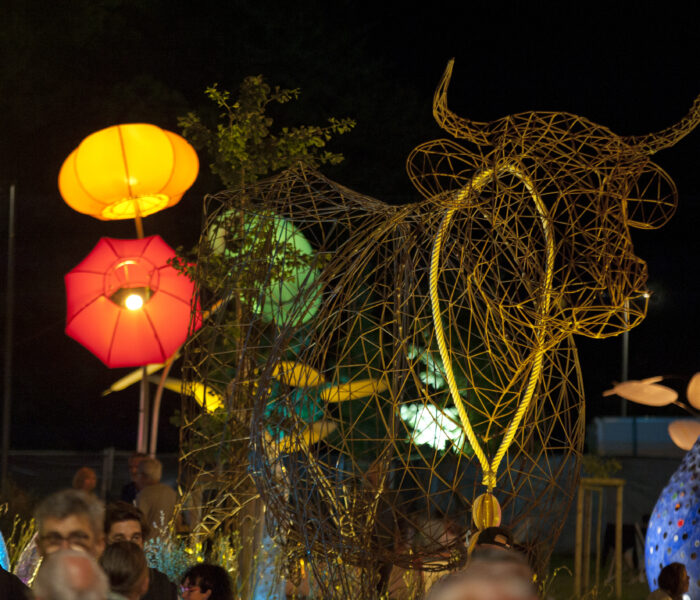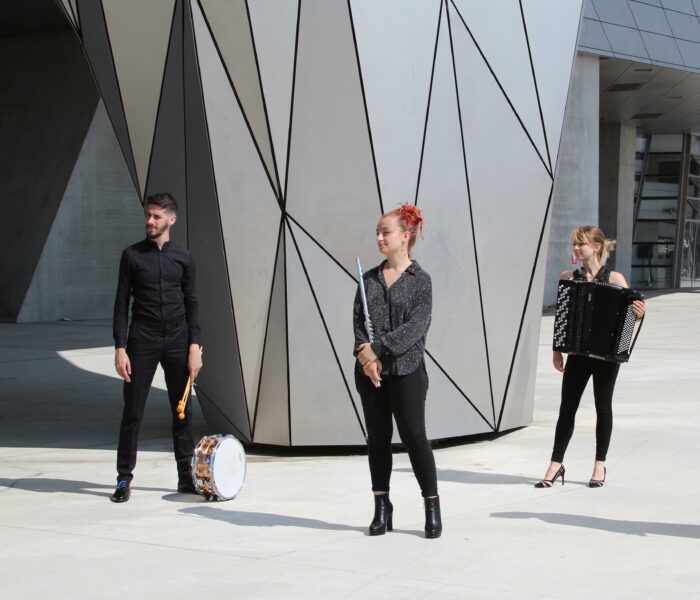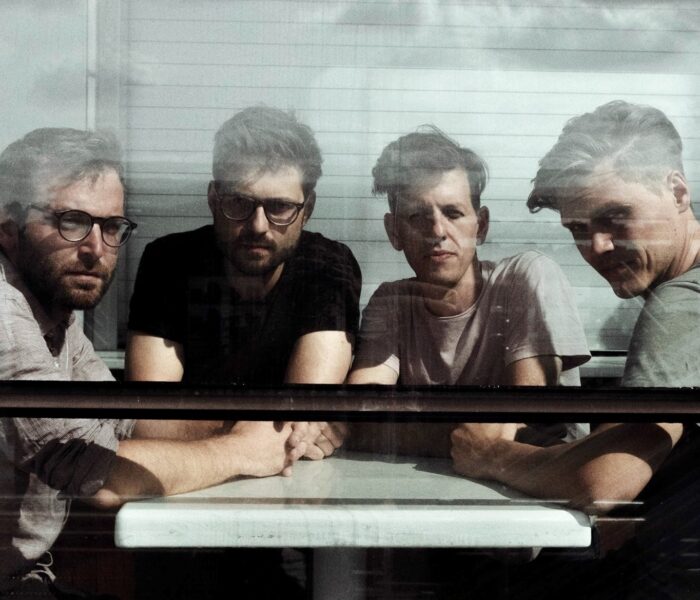Le 15 décembre, l’Auditori de Barcelone a accueilli deux premières mondiales d’inspiration clairement littéraire, toutes deux commandées par la Creació Sonora de Barcelone : Ariel (2022) de Montserrat Lladó et Restos de Puente (2022) de José Mora. Le répertoire de la soirée s’est clôturé avec Machaut-Architekturen (2003-2005) du célèbre compositeur espagnol José María Sánchez-Verdú, et la nouvelle version pour six percussionnistes de Dust III (2018-2021), de la compositrice britannique Rebecca Saunders, l’une des compositrices les plus remarquables de sa génération.
Dès que l’on entre dans la Sala 2 Oriol Martorell de l’Auditori, quelques minutes avant le concert, on est frappé par la disposition docile des instruments, à peine éclairés par le clair-obscur de la scène. Face aux murmures respectueux du public, déjà intrigué par les images mélodiques suspendues, les instruments ressemblent à des animaux endormis prêts à être animés d’un instant à l’autre. Et l’équation est simple : cuivres et cordes, bois et percussions. Ainsi, lorsque les lumières s’éteignent, le sort est conjuré.
En équilibre fragile avec le silence, comme des particules dispersées dans l’espace, les notes fragmentées se rassemblent peu à peu autour de nous, aimantées dans le vide par la gravitation esthétique qui réside dans l’œuvre de José Mora. En effet, la première mondiale de la pièce Restos de Puente, une œuvre composée de trente-cinq chapitres/versets plus un épilogue final, s’est déroulée comme un voyage sinueux dans un paysage en ruines, à peine délimité, aux contours vagues et imprécis. Ce discours est présenté comme la métaphore d’une survie précaire, irrémédiablement soumise au passage du temps, à la détérioration et à la ruine. Cela se reflète non seulement dans le titre de l’œuvre de José Mora, mais aussi dans les textes qui ont été placés sur les partitions des musiciens, avec les vers suivants : « Les restes du pont trahissent l’échec de la communication. Des pièces dont l’existence implique une perte. Des fragments qui ne s’expliquent que par le passé de quelqu’un d’autre« . Tout un imaginaire de la perte, subtilement évoqué par des musiciens qui ont capté cette sobriété pleine de creux et de rugosité, traçant un discours qui ne concède rien à la rhétorique traditionnelle, loin d’une conception classique de la beauté ; une esthétique, en somme, qui fuit les limites de la pulsation, du tempo et du rythme. L’œuvre de José Mora était impalpable, comme du sable glissant entre les doigts, mais enchanteresse par l’exploration hypnotique du détachement.

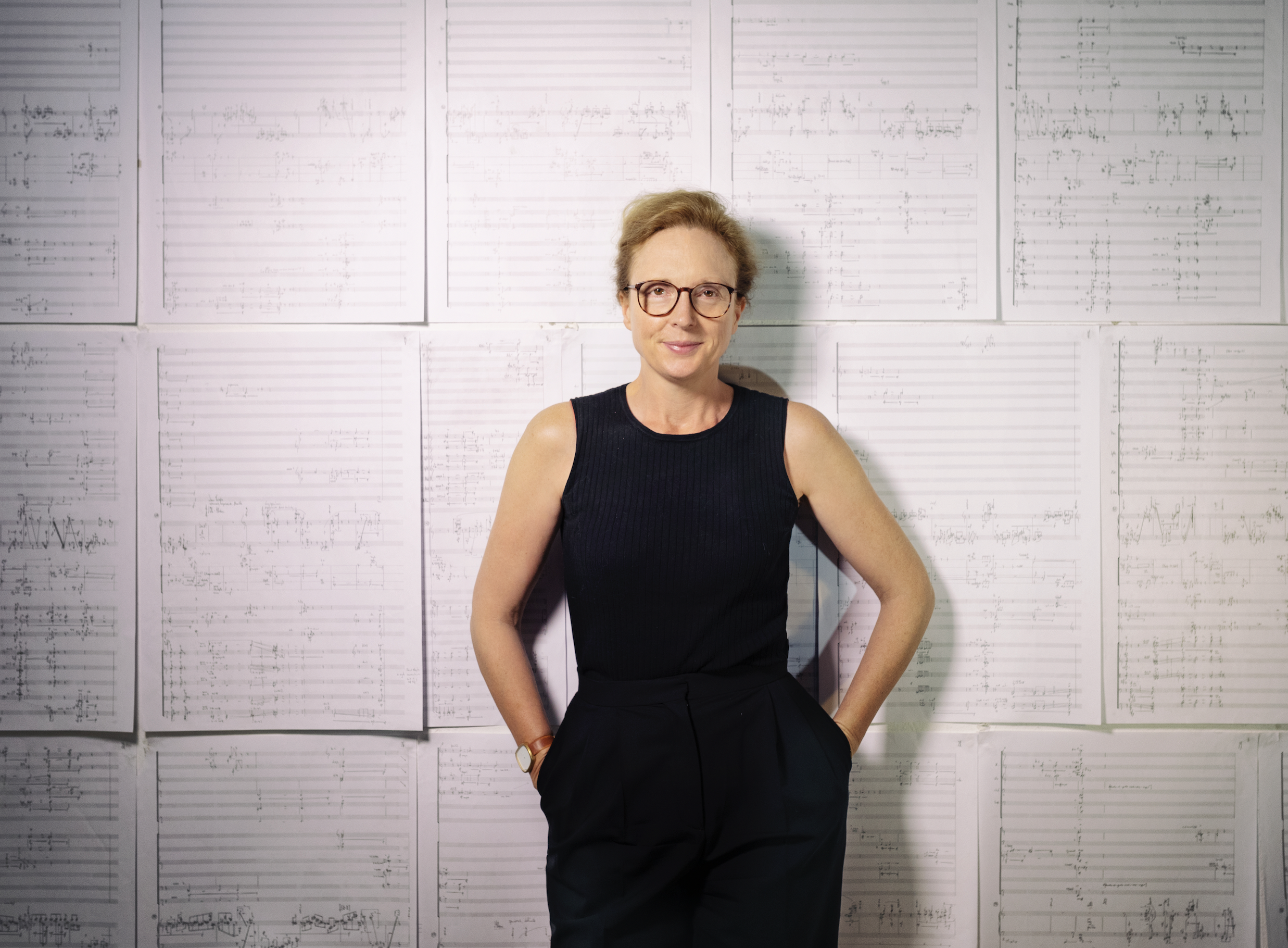

La soirée s’est poursuivie avec Machaut-Architekturen (2003-2005) de Sánchez-Verdú, et nous sommes sortis du paysage sablonneux que nous offrait Mora pour entrer dans un paysage d’une grande solidité structurelle, car la pièce de Sánchez-Verdú est une pièce solidement dessiné, ce qui donne au timbre une signification particulière. Alors que Machaut-Architekturen (2003-2005) se compose de cinq pièces (ou mouvements), Crossing Lines et Sánchez-Verdú ont choisi les pièces III, IV et V pour ce concert. Bien que ces pièces aient été conçues à l’origine comme des interludes entre les cinq parties de la Messe de Nostre Dame du chanoine Guillem Machaut – l’un des chefs-d’œuvre de la musique médiévale, la première messe complète conservée avant 1365 – la sélection choisie était suffisante pour que le public puisse apprécier le tempérament et le sens musical de Sanchéz-Verdú, son approche discrète de l’utilisation du mètre, sa précision métrique. Tout cela s’est déroulé en une trame articulée en différentes couches, un discours polyphonique riche en nuances et en textures entre tradition et modernité. De fait, avec cette volonté expressive sincère de communiquer avec la tradition, le compositeur espagnol non seulement s’y enracine, mais l’élargit, la nourrit et l’enrichit.
Rebecca Saunders et Montserrat Lladó ont ouvert la deuxième partie du concert.
Bien que les deux compositrices soient de générations différentes, elles s’inspirent toutes deux de la littérature pour nourrir leur sensibilité artistique ; avec une prédisposition presque innée à tisser des atmosphères sombres aux contours timbraux microscopiques et fragiles.
La première œuvre Dust III (2008-2021) est issue de Dust (2018), une pièce solo de Saunders qui a couronné un processus de près de quinze ans de recherche sonore.
Cependant, comme si cette exploration constante était la raison d’être artistique de la compositrice britannique, pour ce concert, Rebecca Saunders nous a offert Dust III, une nouvelle version de l’original, mais adaptée pour six percussionnistes, de l’ensemble Frames Percussion, répartis dans différents espaces. La pièce respire à travers huit modules indépendants mais combinables, illustrant une narration attentive à la microtonalité et, à son tour, aux basses fréquences ; intéressée par la découverte de sons originaux, de nouvelles tessitures, procédant par la combinaison d’éléments ou l’utilisation d’objets non conventionnels ; ou encore, par la création d’artefacts sonores inouïes. Toutes ces sonorités déployées devant nous pourraient bien nous rappeler la tessiture de la boue, ce mélange d’eau et de terre, nous permettant de comprendre par les sens que le fragmenté – ici la poussière (Dust -, renvoie toujours à une unité plus grande.
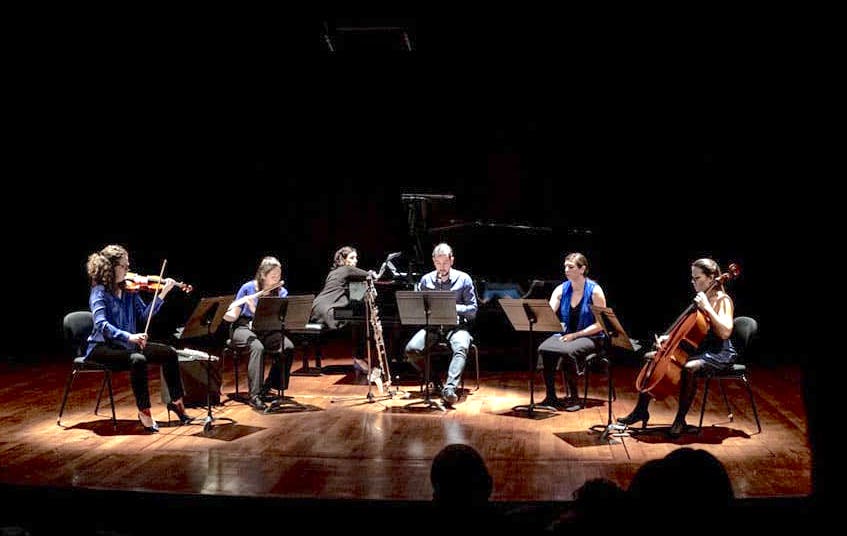


Si Dust III s’inspire de l’œuvre de Samuel Beckett, Ariel (2022) de Monsterrat Lladó prend ses racines dans le poème éponyme de Sylvia Plath. L’œuvre de la jeune compositrice espagnole a donné à la dernière partie du concert un air de procession timbrale, où le quatuor à cordes Cosmos Quartet et le quatuor de timbales sonnent de manière précise et subtile, tous deux enveloppés d’une membrane électronique à la manière d’un synthétiseur, passant par des amplifications du son et des dilatations du temps qui confèrent à l’œuvre de Lladó une certaine qualité de rituel liturgique et initiatique.
Txema Seglers
Photo article Montserrat Lladó © Natalia Franco
Photo © Elvira Megías/CNDM
Photo © Miquel Angel



)

